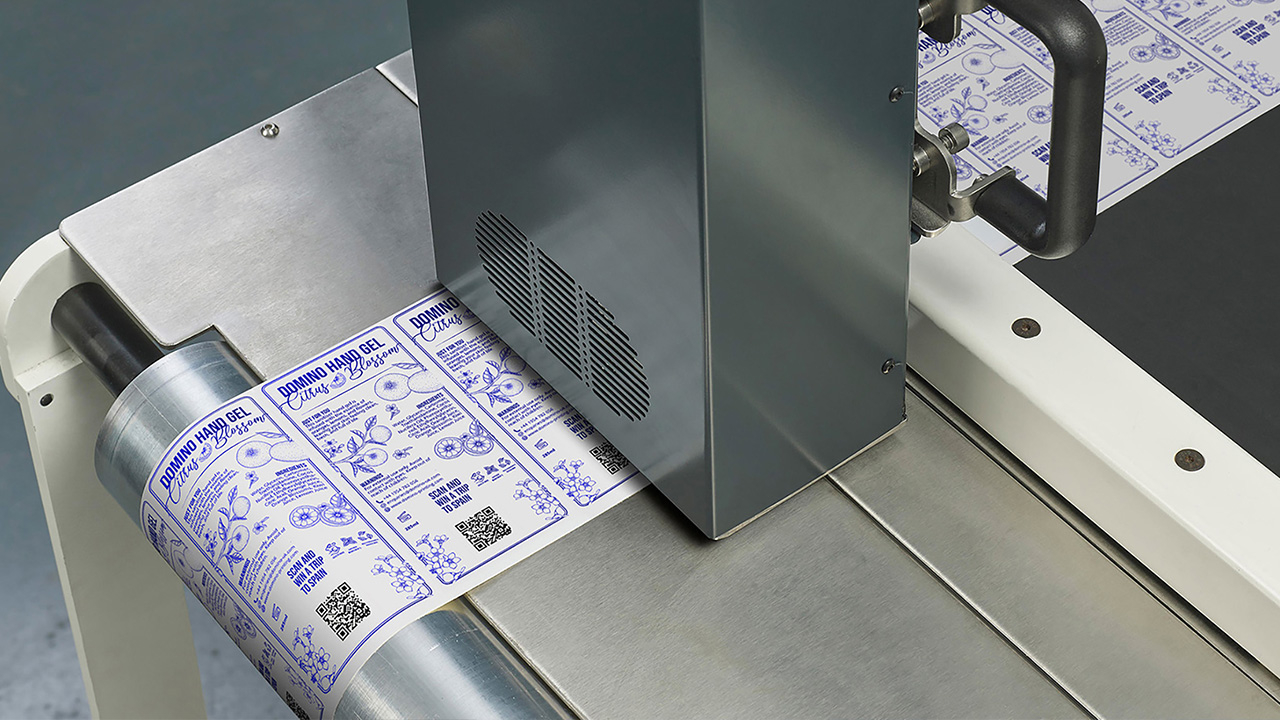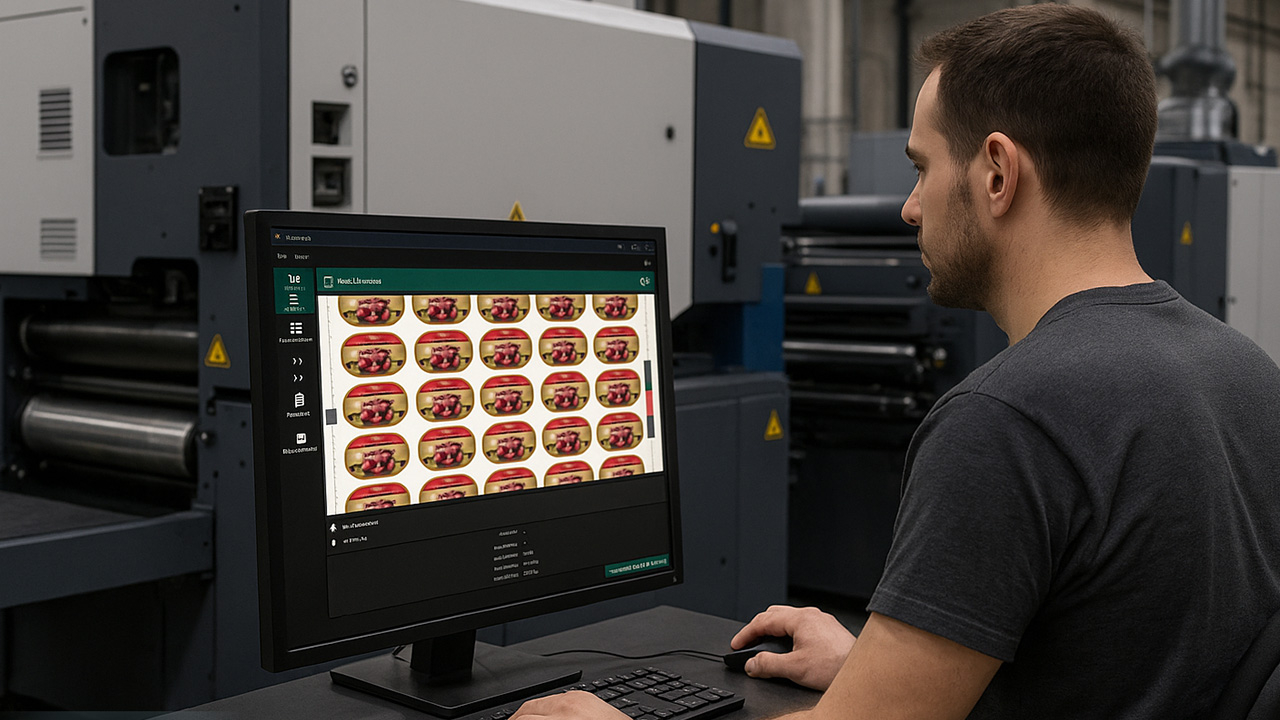Industry preps for Sunrise 2027
The retail industry races toward the GS1 Sunrise 2027 transition, but what does this shift mean for label producers on the front lines of implementation?

The tiny linear barcode tucked onto every retail product since the 1970s is getting a major upgrade that promises to transform not just how products are scanned, but how they communicate with the entire supply chain. Converters face both unprecedented technical challenges and remarkable business opportunities.
2027: Evolution, not extinction
Contrary to widespread industry anxiety, 2027 is not a hard deadline marking the death of traditional barcodes. ‘The most common misconception is that 2027 is a cutoff date, but it’s actually the year we expect to reach a critical mass of retailers scanning 2D barcodes at point of sale,’ explains Camila Young, program lead at GS1 UK. ‘Traditional linear codes will continue to exist alongside their data-rich counterparts.’
This clarification offers converters a more nuanced understanding of the transition period, though preparation remains crucial as major brands and retailers accelerate their adoption strategies. Young emphasizes that converters must ‘adhere to GS1 standards for barcode quality, placement and data accuracy,’ while staying updated with evolving regulations.
These placement requirements are particularly exacting. Videojet notes that 2D codes should be printed ‘within the optimal 50 mm radius from the center of the EAN/UPC’ to comply with GS1 standards, a seemingly minor detail with significant production implications.
Static vs dynamic
Perhaps the most consequential decision brands face is whether to implement static 2D codes (containing fixed information similar to current linear barcodes) or dynamic codes that incorporate variable data like expiration dates, batch numbers, or serialized identifiers printed during production.
“The most common misconception is that 2027 is a cutoff date, but it’s actually the year we expect to reach a critical mass of retailers scanning 2D barcodes at point of sale”
‘The biggest challenges will likely include adapting to new printing technologies for dynamic data, ensuring the accuracy and readability of barcodes, and integrating these changes into existing production workflows,’ Young predicts.
For converters, this distinction dramatically impacts necessary equipment investments and production workflows. Lee Metters, group business development director at Domino Printing Sciences, emphasizes that different brand strategies will determine how converters need to adapt: ‘There are several implementation strategies for Sunrise 2027, from having a 2D code that only includes the same data as the current barcode, without additional functionality, to serialized codes integrated into the brand’s supply chain.’
The relationship between converters and brands must evolve into a more integrated partnership, particularly for products requiring variable data.
‘Delivering the right labels with accurate dynamic codes requires unprecedented synchronization between converter production systems and brand data,’ Metters notes. ‘The stakes are considerably higher. Errors can result in unusable packaging or potentially reputation-damaging recalls.’
Resolution revolution
Resolution becomes the critical factor when it comes to printing reliable, scannable 2D codes. Unlike their linear predecessors, 2D barcodes pack information into intricate patterns that demand precision reproduction, a challenge that’s pushing printing technology to new limits.
Konica Minolta’s Carsten Bamberg highlights their advanced capabilities: ‘We provide advanced toner-based label presses with print resolutions of up to 2,400 DPI to ensure highly accurate print and image quality.’
Similarly, Martin Leitner from Durst Group emphasizes native high-resolution capabilities: ‘The complete Tau RSC printer platform is printing with native 1,200 x 1,200 DPI resolution. This ensures that customers can print fine details and excellent quality at a printing speed of up to 80 m/min.’
Alexander Sperling, technical product manager at EyeC, explains the critical factors determining code functionality: ‘Our inspection solutions analyze essential scannability elements including print clarity, contrast, alignment, quiet zones and code integrity. Without sufficient resolution, these elements break down and codes become unreliable.’
For converters handling dynamic data, equipment selection becomes pivotal. ‘Implementation options range from digital label presses to digital monochrome overprinters integrating with existing lines,’ says Metters. ‘The key is finding technology that maintains code quality while accommodating production volume requirements.’
While digital printing offers natural advantages for variable data, converters using conventional methods still have viable options for participating in the 2D revolution.
‘If it’s a simple change of artwork, the challenge for converters is ensuring all codes are printed at the right size to ensure reliable scanning,’ Metters explains. ‘This path only holds a relatively small learning curve for converters, as these codes can be printed using traditional methods such as flexo, as well as digital printing technology.’
For more complex implementations involving variable data, hybrid systems offer an efficient approach. ‘A hybrid solution will be most cost-effective for many,’ Metters notes. ‘Here, Domino can support converters in identifying the best location to position a monochrome printer and inspection equipment to print and verify a variable 2D code.’
Thermal transfer technology remains viable for the 2D transition. ‘Thermal transfer printing is an excellent method for producing the high-quality QR codes needed for reliable scanning,’ notes Pierre-Arnaud Hommel, communication manager at Armor-IIMAK. ‘It creates crisp, clear images with good contrast, which is essential for scanners to read the codes accurately.’
Zero error tolerance
Unlike traditional barcodes, where occasional scanning issues might be tolerated, 2D codes containing critical product data demand flawless execution, driving unprecedented focus on verification systems.
‘The verification process must be comprehensive and multi‑layered,’ advises Sperling from EyeC. ‘This begins with pre-press file verification, continues with high-resolution inspection of printed samples against ISO standards, and culminates with 100 percent in-line inspection during production runs.’
“Delivering the right labels with accurate dynamic codes requires unprecedented synchronization”
For variable data applications, verification is non-negotiable. As Metters emphasizes, ‘Discovering code failures after products have been shipped to retail creates costly recalls and damages brand reputation. The verification system must match the sophistication of the code production technology.’
Industry experts recommend adopting ISO/IEC 15415 standards as the baseline quality benchmark, with verification systems from companies like EyeC, Axicon, REA Jet, Cognex and Omron providing the necessary compliance validation.
The intelligence behind the codes
Beyond hardware considerations, sophisticated software increasingly plays a crucial role in implementing GS1 Digital Link barcodes effectively. Konica Minolta highlights its software capabilities: ‘Our AccurioPro Flux pre-press software with the optional ‘Flux Barcode Pro’ feature is supporting the major GS1 barcode types, like GS1 QR Code, GS1 DataMatrix, GS1-128, GS1 various DataBar versions and ITF-14,’ says Bamberg. ‘We create a ‘soft proof’ of all the generated barcodes, and thereby any errors will be automatically detected, without any human interaction, before the actual print job is sent to the press.’
Serge Clauss from Durst Group notes its workflow technology’s variable data capabilities: ‘Durst Workflow Label provides two levels of VDP capabilities depending on the customers’ requirements. One version is dedicated text and barcodes/QR codes whereas the other version supports variable images and advanced data changes.’
From printer to strategic partner
The 2D barcode transition presents significant business opportunities for converters willing to expand their offerings.
‘Converters are well positioned to become technical advisors to brand owners implementing GS1 Digital Link barcodes,’ notes Young from GS1 UK. ‘GS1 provides extensive resources, standards documentation, and support through our global network of membership organizations. These standards are openly accessible online, giving converters the opportunity to develop specialized expertise that adds value beyond traditional print services.’
Metters identifies several potential growth areas: ‘Smaller brands might not know how to create a resolver page to go with their QR codes powered by GS1, so there’s an opportunity to support and educate them on the options available. Converters could consider providing an in-house service for resolver pages or collaborating with specialist software providers offering a white-label service.’
He also points to specific sectors with heightened demand: ‘We anticipate strong demand for variable data codes in the food and drinks sector, particularly for products with a short shelf-life. Another growth area is high-value products, where serialized 2D codes can be used in the fight against counterfeiting.’
The retail applications extend beyond mere product identification. ‘Retailers can benefit from batch and expiry information contained in 2D codes for perishable items, which can be used to support stock rotation with automated discounts as the expiry date nears. Brands can use the additional data capabilities to provide more information to consumers, with the added benefit of gaining consumer insights,’ Metters explains.
First movers already in motion
While many converters are still in the planning stages, several major brands are already deploying GS1 Digital Link barcodes ahead of the 2027 transition.
‘Unilever, Procter & Gamble and L’Oreal all have large-scale rollouts of digital link QR codes with static data,’ reports Young from GS1 UK. ‘When it comes to dynamic data, the retailers are the early adopters. Tesco is currently piloting this in the UK, and Woolworths Australia is the most advanced implementation globally.’
While technology providers actively work with early adopters, many of these implementations remain confidential as brands develop their strategic approaches. Durst mentions they are ‘partnering with a couple of early adopters who already started to implement advanced 2D codes. These field tests are highly strategic to us and give us feedback to enhance our technology.’
Preparing for a connected future
The 2D barcode transition represents a pivotal moment for the label and packaging industry, one that transcends mere technical compliance to fundamentally redefine converter business models. Those who recognize this shift as a strategic inflection point stand to emerge as essential partners in the digital product ecosystem.
‘Early movers will secure significant competitive advantages,’ notes Metters. ‘Those developing expertise now in variable data printing, verification systems, and integrated data management will capture the highest-value opportunities as adoption accelerates.’
The most forward-thinking converters are already investing in flexible systems capable of handling both today’s static codes and tomorrow’s serialized applications. This approach creates scalable solutions that evolve alongside brand requirements, transforming what might be seen as a compliance burden into a catalyst for business transformation.
As Young emphasizes: ‘This represents the most significant change in product identification since barcodes first revolutionized retail. The winners will be those who help brands navigate this complexity while unlocking new consumer engagement possibilities.’
With 2027’s adoption target approaching rapidly, the window for strategic positioning is narrowing. The converters who thrive will be those who move beyond traditional production roles to become indispensable technology partners in an increasingly connected commercial ecosystem.
Click here to learn more about the support available from GS1
Stay up to date
Subscribe to the free Label News newsletter and receive the latest content every week. We'll never share your email address.


